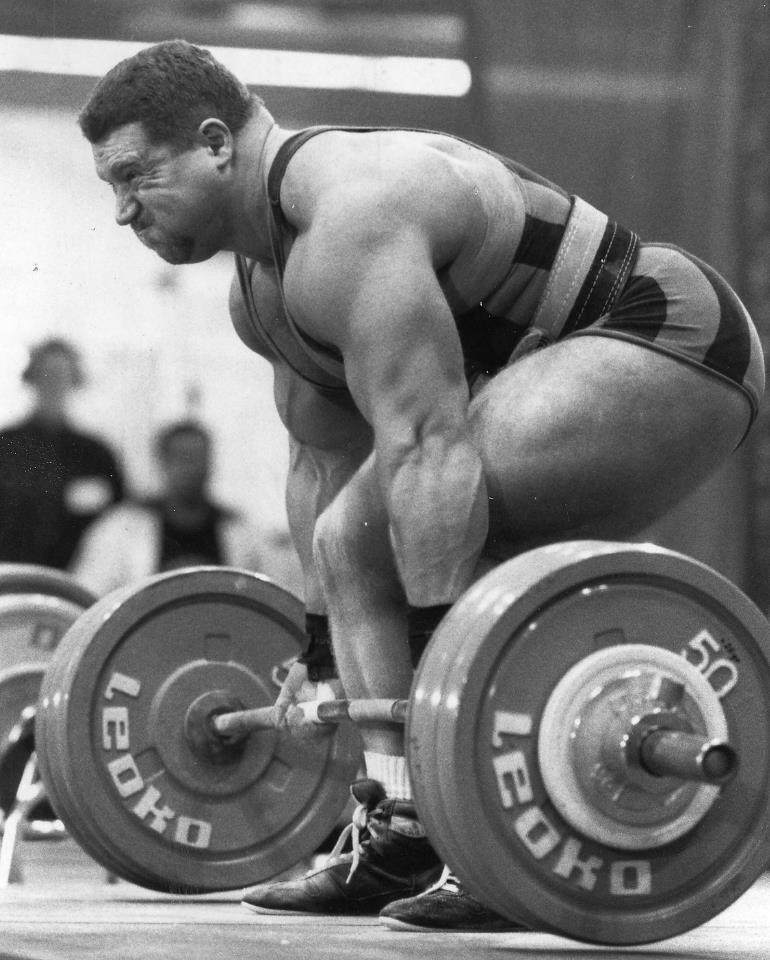
Strength Training Modalities
Not one, not two, all three
When I hear the phrase ‘strength training’ I immediately think – what kind of strength are we talking about? I have no idea how strength is subdivided in academia, but in the empirical world, where I live (and thrive)…
- Absolute strength
- Explosive strength
- Sustained strength
Absolute Strength Training: maximum payloads moved for short distances and low reps. Low-end torque, slow velocity, maximum exertions executed in a minimum timeframe. Massive payloads moved for short distances without regard to velocity. Includes isometrics. Yields optimal brute force.
Explosive Strength Training: moderate payloads moved with maximum velocity over extended distances. Pure high-end horsepower, push or pull with sufficient velocity to create momentum. Yields explosiveness and quickness combined with power.
Sustained Strength Training: minimum payloads moved for high reps over extended periods. A purposeful injection of muscular effort into a cardiovascular format. Yields increased stamina; improves the ability to continually exert at a high level over extended periods.
These three strength definitions portray archetypical benchmarks that are clearly defined and clearly different. There are, however, grey areas that lie in the gaps between each type. Not every athletic activity or training protocol falls cleanly into one of the three archetypical categorizations. The grey areas interconnect the three strength benchmarks and have shades and degrees.
Why is strength differentiation important? Each of the three strength benchmarks, the three modalities, needs and deserves a portion of available training time. Most strength trainers train one of the modalities while ignoring the other two. The optimal approach is to attend to all three types. Apportion available strength training time three ways: the default division would be equal time for each of the three strength types.
Each week, each strength type needs training, to a greater or lesser degree. An intermediate level athlete that trains four times a week for an hour per session (four cumulative hours per week) could structure a training schedule that pays homage to all the prototypes using the following template…
Monday
am 20 minutes strength endurance 20 to 40-yard dash; sprint, recover, sprint again
pm 40 minutes explosive/absolute power jerk off racks, front squat
Tuesday off
Wednesday
am 20 minutes strength endurance MMA style: grapple, box, heavy bag, versa-climber
pm 40 minutes explosive/absolute power clean, bench press, arms
Thursday
am 20 minutes strength endurance high-intensity kettlebell session
pm 40 minutes explosive/absolute power snatch, deadlift
Friday off
Saturday
am 20 minutes strength endurance run hills
pm 40 minutes explosive/absolute high pull, overhead press
Sunday off
How many explosive and absolute exercises can be done within each 20-minute session allotment? This depends on the strength of the trainee. Really strong men need a lot of sets to get to their top set and will have to hustle to get one lift done within the allotted time. Beginner and intermediate trainees use less poundage, ergo it takes fewer sets to get to their top sets. An intermediate level athlete should be able to get two lifts done within the 20-minutes allotted. Beginners might be able to squeeze in three lifts per 20-minute segment.
This is just one potential three-modality training template. This core template could be expanded if more training time were made available. If two separate sessions a day is unrealistic, single daily sessions are made doable by simply placing the strength-endurance portion in the 3rdand final position within the workout template. Always lead the workout with explosive strength, morph into absolute strength and end with strength-endurance. Another option is to train sustained strength on the three “off days.”
Weak points should be prioritized. If you are strong yet out-of-shape, the smart move would be to emphasize strength-endurance. Conversely if you can run a marathon but cannot deadlift 200-pounds, a reordering of training priorities is in order. Bias available training time to address shortcomings and weak-points.
Every week train all three strength types to greater or lesser degrees. Start the process with some realistic self-assessment. Stop continually playing to your strengths. If you can begin systematically and methodically to train strength modalities neglected to this point and experience a surefire breakthrough to the next level of physical development and improved performance.
About the Author
As an athlete Marty Gallagher is a national and world champion in Olympic lifting and powerlifting. He was a world champion team coach in 1991 and coached Black's Gym to five national team titles. He's also coached some of the strongest men on the planet including Kirk Karwoski when he completed his world record 1,003 lb. squat. Today he teaches the US Secret Service and Tier 1 Spec Ops on how to maximize their strength in minimal time. As a writer since 1978 he’s written for Powerlifting USA, Milo, Flex Magazine, Muscle & Fitness, Prime Fitness, Washington Post, Dragon Door and now IRON COMPANY. He’s also the author of numerous books including Purposeful Primitive, Strong Medicine, Ed Coan’s book “Coan, The Man, the Myth, the Method" and numerous others. Read the Marty Gallagher biography here.

